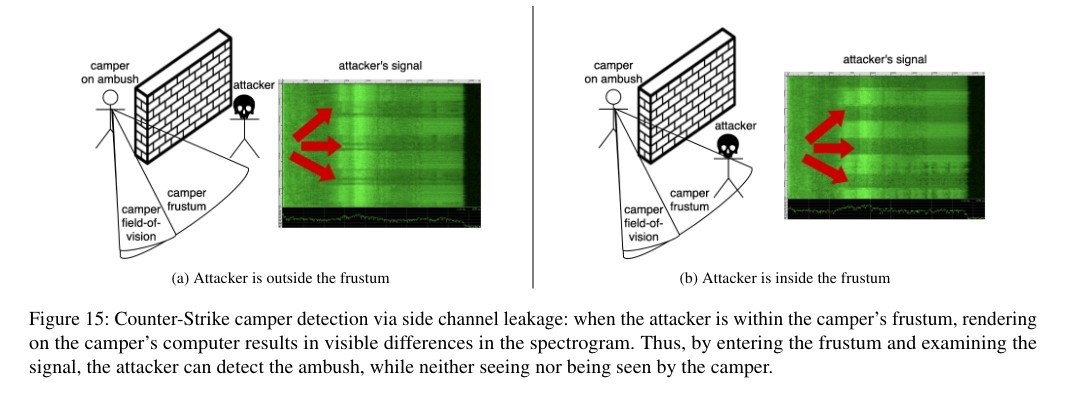Posts
492Following
474Followers
386📡 https://w7txt.net/
🐧 https://blog.namei.org/
☠️ https://www.facebook.com/w7txt
James Morris
 repeated
repeated
Linux Security Summit 🐧
LinuxSecSummit
🎟 There were some issues with the CfP closing in the wrong timezone: if you were unable to submit your proposal due to this, please use this secret link: https://sessionize.com/linux-security-summit-na-2024/?e=7aa558
James Morris
jmorris
@penguin42 that’s why we just mentioned the one 3 phase I’d seen. I don’t understand it in general.
James Morris
jmorris
@stefanfendt this is what I'm referring to, 480v with all 3 phases shorted together, https://www.youtube.com/watch?v=kXO9GJXF1kg
James Morris
jmorris
@stefanfendt there are RCDs (GFCIs) in the US on many outlets, especially near water or outside.
James Morris
jmorris
@HopelessDemigod yep, I have wondered about meteor scatter, which can provide 24/7 coverage in the range 500km-2300km if set up properly and also using burst mode comms. Very low bandwidth, but it doesn't depend on any fixed infrastructure, and is also resistant to nuclear effects. HF skip paths will be blocked by ionized air where detonations happen, but VHF will pass through.
James Morris
jmorris
Also, re US vs .au, the way people talk about mains phases in the home can be confusing. Each 120v supply is called a phase, whereas if you have two 240v phases in .au, it's from a 3-phase feed. The 3-phase power I've seen in a person's garage here was 480v, which is getting well into catastrophic arc flash territory (search it up on youtube for an exciting time). People here very often do their own mains wiring mods, which is extremely unusual in Australia, I suspect in part because the default 240v is often lethal. Expect to die if you touch it.
James Morris
jmorris
Using green wire for ground because the USA uses black for mains hot (active). I try and do this here when AC & DC are in the same enclosure. In Australia, brown is active and blue is neutral.
Also, fwiw, mains voltage here is supplied to homes as 240v, split into 120+120, neutral is centre tapped. It is not 110, 115, or whatever else you see: it’s 120v. Heavy duty appliances typically have 240v supplies, and some people run 240v to an outlet in the garage.
Also, fwiw, mains voltage here is supplied to homes as 240v, split into 120+120, neutral is centre tapped. It is not 110, 115, or whatever else you see: it’s 120v. Heavy duty appliances typically have 240v supplies, and some people run 240v to an outlet in the garage.
James Morris
jmorris
Edited 1 year ago
Finished making a thing. This is a power supply for the 30W 10 GHz amplifier I’m working on. It should also be able to power the transverter, IF radio, & relays. I’m resisting the temptation to add an MCU and display. For now.
(Note: the 50 Hz label should say 60 Hz)
#hamradio #electronics #amateurradio #microwave #qro #sspa
(Note: the 50 Hz label should say 60 Hz)
#hamradio #electronics #amateurradio #microwave #qro #sspa
James Morris
jmorris
I guess the black paint is for optimum heat transfer to the thermistor? Gold plated everywhere else for RF efficiency.
James Morris
jmorris
Close up of the thermistor, which is a tiny bead in the middle of the photo.
James Morris
jmorris
Ok, I think I understand this a little more now. The horizontal bar in the waveguide is a thermal mass, which heats up in the presence of RF. The detector thermistor is attached to it (too small to see here), and it will closely follow the temperature of the bar. A bias current runs through the thermistor, and also the isolated compensation thermistor. The comp thermistor has its own thermal mass, which is the gold plated square, and a couple of rectangular blocks, which I assume were selected and pasted in by hand during construction, and this can be finely adjusted via the screw. Not sure exactly where the compensation thermistor is yet, and the circuit diagram shows a capacitor here somewhere. Could be both are in the white block, which looks like a modern SMD cap.
James Morris
jmorris
Edited 1 year ago
Not sure if this microwave power sensor is repairable. It’s an HP P486A waveguide thermistor mount for 12.4 to 18 GHz. It was bugging out, and I’ve rejuvenated one of these before (using the guidelines in the manual) but it didn’t work this time. I’m puzzled by the mechanics of this, what the adjustment screw actually does, and why is it attached to a small metal block which is maybe held with conductive paste? It’s supposed to finely match the inner and outer thermistors: one is in the waveguide and the other is inside the housing as a reference. The waveguide thermistor is heated by the RF signal, and the power meter detects this, via a bridge circuit which tries to balance the current in each thermistor.
The wonders of 1960s microwave tech. We explored space with this stuff.
#hamradio #amateurradio #microwave #electronics
The wonders of 1960s microwave tech. We explored space with this stuff.
#hamradio #amateurradio #microwave #electronics
James Morris
 repeated
repeated
Jeroen Baert
jbaert@mastodon.socialCrazy read: detecting positions of players in Counterstrike by *listening to their GPU over a microphone*
James Morris
 repeated
repeated
keithp
keithp@fosstodon.orgReleased picolibc version 1.8.6 today.
Highlights: ctype avoids a static array, fenv functions are inlined (except on x86).
Full release notes here: https://github.com/picolibc/picolibc/releases/tag/1.8.6
James Morris
 repeated
repeated
Linux Security Summit 🐧
LinuxSecSummit
❕ 📢 Note: The LSS-NA 2024 CfP has been EXTENDED ❕
🐧 The new CfP deadline is: Sunday, February 4 at 11:59 PM PST
🐧 For full details, see
https://events.linuxfoundation.org/linux-security-summit-north-america/program/cfp/
RE: https://social.kernel.org/objects/a91fa775-15d9-4ee0-bc99-f9b40cad10c5
🐧 The new CfP deadline is: Sunday, February 4 at 11:59 PM PST
🐧 For full details, see
https://events.linuxfoundation.org/linux-security-summit-north-america/program/cfp/
RE: https://social.kernel.org/objects/a91fa775-15d9-4ee0-bc99-f9b40cad10c5







